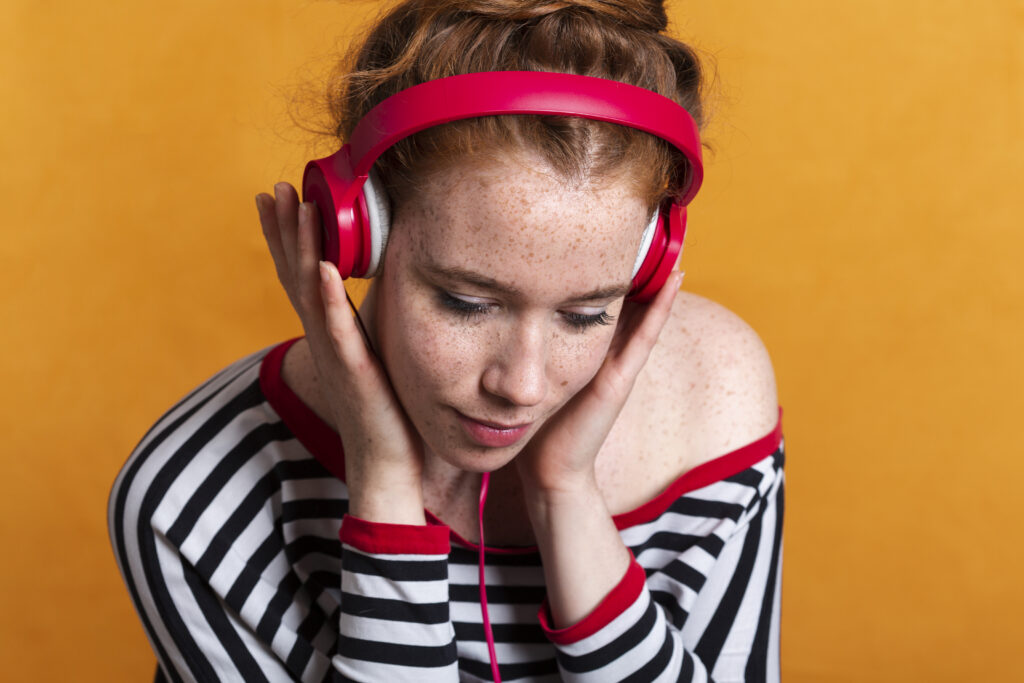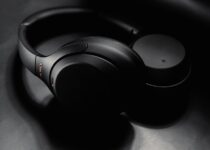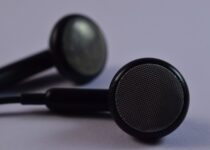How to stop sound leaking from headphones?
When we listen to music or engage in private conversations using headphones, the last thing we want is for the sound to leak out and disturb those around us. Sound leakage not only compromises our privacy but also disrupts the peace of others.
Fortunately, there are several effective strategies to minimize sound leakage and ensure a more enjoyable and considerate listening experience.
Whether you’re using open-back or closed-back headphones, understanding these techniques can help you contain the sound within your personal space while maintaining clarity and quality in your audio.
Let’s explore some simple yet effective methods to stop sound leaking from headphones.
What is a Headphone Sound Leak?
Headphone sound leakage refers to the escape of sound from your headphones into the surrounding environment.
It occurs when the sound produced by the drivers within the headphones is not adequately contained, allowing it to be heard by others nearby.

This phenomenon can occur with over-ear and in-ear headphones, although the degree of leakage may vary depending on the design and construction of the headphones.
Read: Sennheiser launches Accentum Plus headphones in China for 1999 Yuan ($278)
Factors Contributing to Headphone Leakage
1. Headphone Driver Size
The size of the headphone drivers, also known as transducers, plays a significant role in determining the amount of sound leakage.
Larger drivers tend to produce louder sound and may result in more pronounced leakage, especially at higher volumes.
2. Enclosure Design
The design of the headphone enclosure also influences sound leakage. Open-back headphones, which have perforated or vented ear cups, are more prone to sound leakage compared to closed-back headphones.
The open-back design allows sound to escape freely, which can be desirable for achieving a more natural sound but may lead to increased leakage.
Testing for Sound Leakage
Before addressing sound leakage issues, it’s essential to determine whether your headphones are indeed leaking sound.
Testing for headphone sound leakage is a simple process that won’t consume much time, yet it’s always a worthwhile endeavor. All you require is a cooperative friend and some good music.
Step One: Find a Friend (with headphones!)
Begin by locating a friend who also possesses headphones, preferably a different pair than yours. This serves two purposes:
- You have someone to ascertain if your headphones are leaking.
- You can compare your headphones to determine if the leakage is within normal bounds or exceptionally severe.
Step Two: Wear Your Headphones (or Have Your Friend Wear Them!)
Step Three: Play music through your headphones while your friend stands a few meters away (an excellent activity while adhering to social distancing norms!).
Step Four: Can either you or your friend hear the music?
Ensure you initiate the volume at a low level and gradually increase it to pinpoint when the leakage becomes noticeable.
Conduct this experiment in a quiet room to minimize distractions or confusion from ambient noise for both you and your friend.
How to stop sound leaking from headphones? (6 Tips Revealed)
There are several practical tips and techniques you can employ to prevent sound leakage from headphones.
By implementing these strategies, you can enjoy your audio experience to the fullest while respecting the peace of those around you.
Let’s explore six effective tips to help you contain sound leakage and optimize your headphone usage.
1. Use foam ear tips and earpads
Foam ear tips and earpads are indispensable accessories for headphone users seeking to prevent sound leakage effectively.
These soft and pliable materials create a snug seal around the ears, effectively containing the sound within the headphones.
By minimizing gaps and openings, foam ear tips and earpads contribute significantly to reducing sound leakage, ensuring a more immersive and private listening experience.
Their comfortable design also enhances overall comfort during extended periods of use, making them a practical and convenient solution for headphone enthusiasts.
2. Cover your earbuds with your hands
Covering your earbuds with your hands can serve as a quick and makeshift solution to mitigate sound leakage.
By placing your hands over the earbuds while they are in your ears, you create a temporary barrier that helps contain the sound within the ear canal.
While not as effective as other methods, such as using foam ear tips or earpads, covering your earbuds with your hands can be handy in situations where you need to minimize sound leakage temporarily.
3. Use bone-conduction headphones
Using bone-conduction headphones is an innovative approach to minimizing sound leakage.
Unlike traditional headphones that transmit sound through the ear canal, bone conduction headphones deliver audio vibrations directly to the bones of the skull, bypassing the eardrums.
This unique technology allows users to enjoy music or audio without blocking their ears, reducing the potential for sound leakage to the surrounding environment.
Bone conduction headphones are particularly beneficial for individuals who require situational awareness, such as athletes or outdoor enthusiasts, while still maintaining privacy in their listening experience.
4. Use noise-isolation headphones
Using noise-isolation headphones is an effective strategy for reducing sound leakage and enhancing your listening experience.
These headphones feature specialized ear cups or ear tips designed to block out external noise, creating a sealed environment for your ears.

By preventing external sounds from entering and interfering with your music or audio, noise-isolation headphones also help contain the sound within the headphones, minimizing leakage to the surrounding environment.
This not only improves audio clarity but also ensures privacy, making noise-isolation headphones a valuable choice for users who prioritize immersive sound and discretion.
5. Use a pair of ear-protection earmuffs
Using a pair of ear-protection earmuffs can be an effective method to prevent headphone sound leakage.
These earmuffs are designed to create a barrier around the ears, effectively blocking external sounds from entering and containing the sound produced by the headphones within the earmuffs.
By providing an additional layer of insulation, ear-protection earmuffs help minimize sound leakage and maintain privacy during your listening sessions.
They are particularly useful in noisy environments where traditional headphones may struggle to block out external sounds completely.
Overall, ear-protection earmuffs offer a practical solution for reducing sound leakage and enhancing your listening experience.
6. Turn your volume down
Turning your volume down is a simple yet effective way to prevent headphone sound leakage.
By reducing the volume to a comfortable level, you can minimize the intensity of sound emitted by your headphones, thereby decreasing the likelihood of leakage.
High volumes not only increase the risk of sound escaping from your headphones but also contribute to potential discomfort or hearing damage.
By exercising moderation and keeping the volume at a reasonable level, you can enjoy your music while respecting the privacy of those around you.
Additionally, lower volumes promote better hearing health and overall well-being.
Read: How to Clean Headphone Pads?
What Type of Headphones Leak the Most Sound?
Open-back headphones exhibit the highest degree of sound leakage owing to their design, which allows air vibrations to pass freely through the ear cups without obstruction.
Semi-open headphones rank closely behind, offering a slight improvement over fully open designs but still permitting significant sound leakage.
Conversely, closed-back headphones demonstrate the least amount of leakage due to their sealed construction, which effectively contains sound within the ear cups.
On-ear headphones generally experience more noise leakage compared to over-ear models, primarily due to their looser fit on the ears.
Over-ear headphones, while typically average in leakage, may vary depending on factors such as the size and material of the earpads.
Bone conduction headphones present a high level of sound bleed due to their distinctive technology, which transmits audio vibrations through the bones of the skull.
In-ear headphones, or earbuds, are renowned for their minimal sound leakage, especially when equipped with memory foam ear tips, which create a secure seal within the ear canal.
The prevailing trend in headphone design leans towards closed-back over-ear models, as they align with the preferences of most users and offer superior sound containment.
Read: Can headphones cause vertigo?
FAQs: How to stop sound leaking from headphones?
Why is the sound leaking from my headphones?
Sound leakage from headphones can occur due to various factors such as the design of the headphones (open-back vs. closed-back), improper fit, degraded earpads, or excessively high volume levels.
How do I make my headphones leak less noise?
To reduce noise leakage from headphones, consider using closed-back headphones, ensuring a proper fit, replacing worn-out earpads, keeping volume levels moderate, and using noise-isolating or noise-canceling headphones.
Does noise canceling prevent sound leakage?
While noise-canceling headphones primarily focus on reducing external noise by generating anti-noise signals, they may not entirely prevent sound leakage.
However, they can help minimize the perception of external sounds, which indirectly reduces the need for higher volume levels and potential sound leakage.
How do you get rid of bleeding from headphones?
To minimize sound bleeding from headphones, try using closed-back headphones, adjusting the fit for a tighter seal, reducing volume levels, using noise-isolating ear tips or earpads, and considering alternative headphone technologies such as bone conduction headphones.
Regular maintenance, including cleaning and replacing worn-out components, can also help reduce sound bleeding over time.
Conclusion:
In conclusion, sound leakage from headphones can be effectively mitigated through various techniques and practices.
By following the tips outlined in this guide, you can enjoy your audio experience without disturbing others nearby.
Whether it’s adjusting the volume levels, using noise-canceling headphones, or opting for closed-back designs, there are solutions available to suit different preferences and situations.
Remember, being mindful of sound leakage not only enhances your personal listening experience but also contributes to a more considerate and respectful environment for those around you.
So, the next time you reach for your headphones, keep these tips in mind to stop sound leaking from headphones and ensure a more enjoyable experience for everyone involved.



